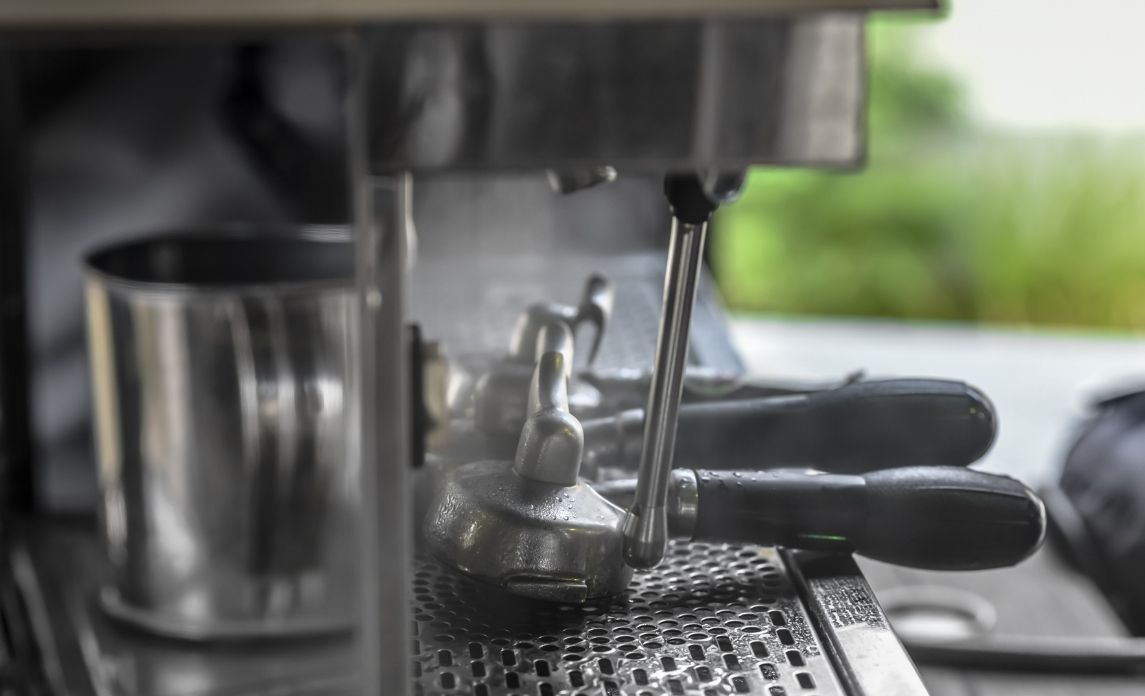One of the trickiest places to clean in the office is the kitchen and dining areas. The oil and grease alone can be notoriously stubborn to remove. In addition, appliances like ovens and refrigerators can easily get splattered and caked with sauces and food bits.
Cleaning the office kitchen and dining areas becomes even trickier if you have special equipment like espresso machines. While some are simple enough to wash and dry, some might need a little more care.
As such, it’s a wise idea to hire professional office cleaners. With their training coupled with top-notch equipment, they can ensure that everything in your office kitchen and dining areas are well-maintained.
Of course, it isn’t practical to wait for the pros every single time to clean your coffee makers. You and your employees should be able to handle the basics of cleaning these marvels of technology so you can get your caffeine fix anytime. Here are some tips for cleaning different types of coffee makers:
Drip Coffee Maker
A drip coffee maker is a popular, affordable, and easy-to-use machine, so it follows that its clean-up is also quite simple. Just fill the carafe with vinegar and water to help sanitise and deodorise the coffee maker, as well as dissolve any accumulation of minerals.
Then, place a filter in the basket and brew as usual. Stop the machine about halfway or three-quarters of the way through the process, then let the vinegar-water mixture sit for half an hour (longer if there’s more severe buildup). After soaking, resume the brewing cycle. Once done, pour out the mixture and dispose of the filter properly.
To get rid of the scent of vinegar, you can repeat the same process but only use clean water. Repeat this rinsing process if there are still traces of vinegar odour.
Grind and Brew
As its name implies, a grind and brew coffee maker has a built-in grinder. This results in a fresher, fuller flavour because the beans are ground only when you brew. The downside is that a grind and brew machine requires more frequent cleaning to prevent the parts from jamming (e.g., due to leftover bits of coffee beans).
To clean a grind and brew coffee maker, you need to open the reservoir and take out the grinder basket and the filter basket. Check the manual on how to remove these parts, so you don’t end up forcing it and unintentionally breaking them. Use warm soapy water to wash all the components, then rinse them thoroughly. Make sure all the parts are dry before placing them back in the machine.
Some grind and brews have a carafe (as opposed to you just placing a cup under the spout). If this is the case, then just wash the carafe as you normally would a regular dish or pitcher.
Espresso Machine
For those with espresso machines in the workplace, the most important part is to clean the group heads and portafilters. For the group heads, a cleaning brush will come in handy for removing bits of coffee. Meanwhile, for the portafilters, you need to replace the brewing baskets with blind baskets and then use dedicated cleaning powders for espresso machines.
Meanwhile, for the steam wand, it’s all a matter of removing the milk after every use. Just wipe the wand with a damp cloth and you’ll be all set. Don’t use any form of scrapers on the wand because these can ruin the coating and cause the milk to burn much faster.
French Press
To clean a French press, you need to first empty the carafe of coffee grounds. Use your hand or a plastic spatula to minimise the risk of breaking the glass. You can also fill the carafe with some water, then drain the contents over a strainer.
When washing the carafe, use warm soapy water; pump the plunger a few times so you get more bubbles/foam. This can help remove traces of coffee. It’s also a good idea to use a bottle brush or a sponge with a handle for a thorough scrubbing of the inside of the carafe. Then, rinse using clean water. Pumping the plunger can help you get all the soap out much faster.
Moka Pot
If you have people in your office who love extra dark coffee, you probably have a moka pot in your office. Whether you’re using a stove-top or an electric model, it’s not recommended to use any kind of detergent to wash a moka pot. Doing so can leave a soapy aftertaste or even make your coffee more bitter.
The key is to just rinse your moka pot using running water. If there are any mineral buildups, use sodium bicarbonate to dissolve them. This will also serve to deodorise your moka pot. For more thorough cleaning, take apart the pot and check the filter and seal. Then, use hot water and white vinegar to soak the individual components. After an hour or so, rinse everything thoroughly using clean running water.
With a clean coffee maker, you and your colleagues can continuously enjoy a cup or two of your favourite brews every day. Just remember to moderate your caffeine intake, okay?


